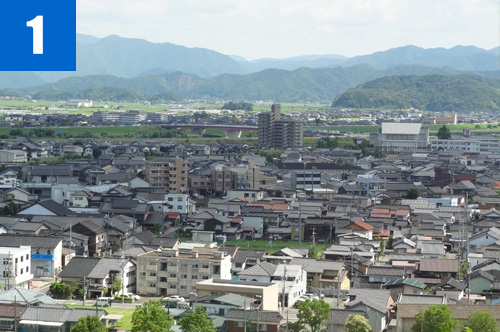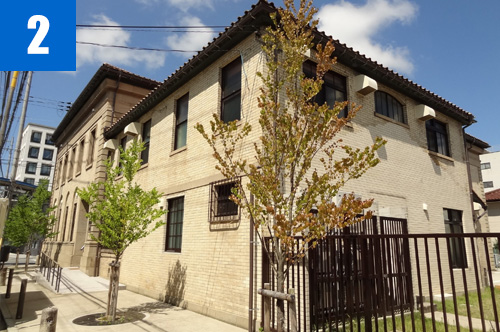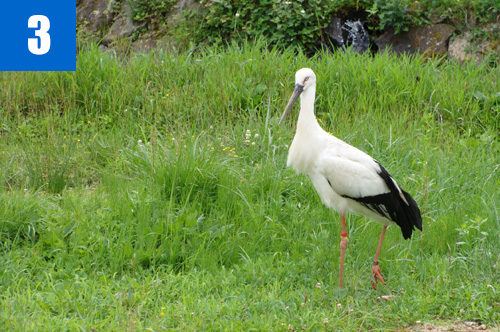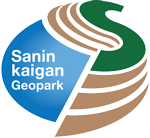The Toyooka Basins had been one of small coves of the ria coast during the Jomon Period. It became the current basin after the cove was rapidly filled with sand and soil conveyed from the upstream of the Maruyama River because the valley downstream of Genbudo is narrow and the sand was easily collected there. People build their houses on the little high places such as the natural banks along the Maruyama River and Izushi River, hills, and fans along a small river, while using swales for rice fields. The swamp is a good habitat for water creatures and the Oriental White Storks come to live there.
(1)Center of Toyooka City
The older town is developed on natural banks along the Maruyama River and a boundary area between monadnock and backswamp. The basalt of Genbudo is used for the base stones for houses.
(2)Toyooka City earthquake restoration buildings
The city area of Toyooka is built on relatively soft sand and soil deposited in the cove, which caused the devastating damage by the North Tajima Earthquake in 1925. Then the citizens built a disaster-resistant town with reinforced concrete buildings, making a “modern” townscape for the early 20th century. The buildings still remain to produce the nostalgic Showa townscape.
(3)Hyogo Prefectural Homeland for the Oriental White Stork
The forefront of the project returning storks to the wild. In 2014, the Graduate School of Regional Resource Management, University of Hyogo, for the research of the geopark and the storks’ return to the wild was established in the site.




